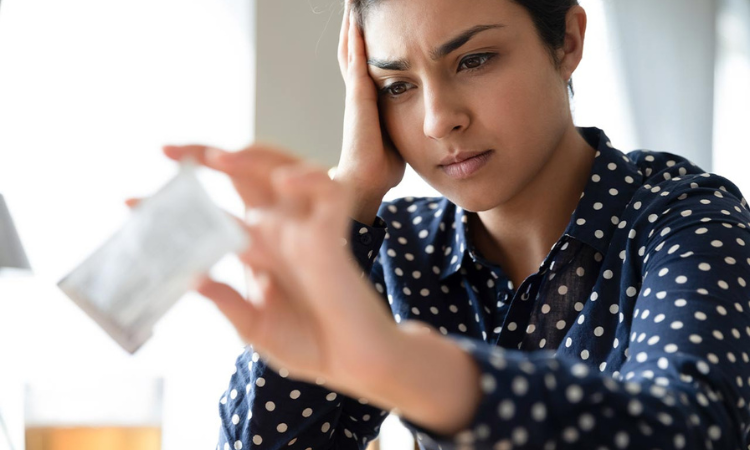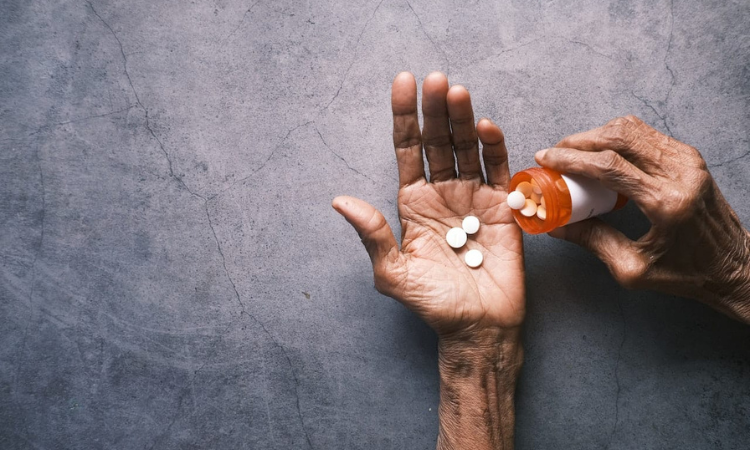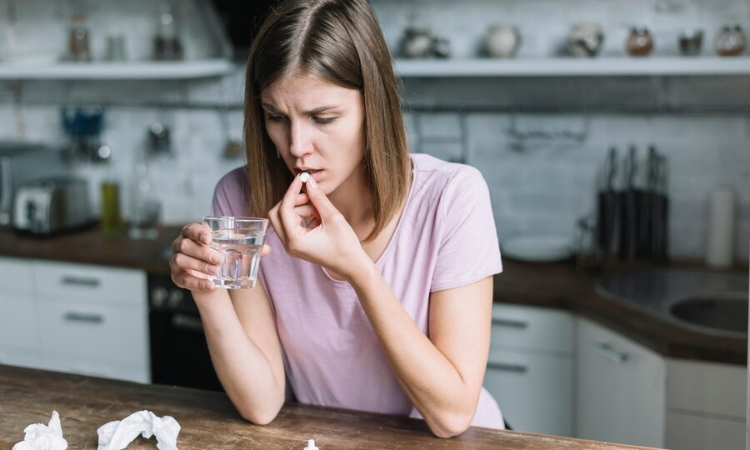Are you familiar with that unforeseen rush of fear and apprehension that can overwhelm you out of nowhere?
If you are nodding your head, you may have felt a panic attack. These occurrences can be hugely frightening and shocking, leaving individuals feeling helpless, drained, and exhausted.
Panic attack disorders have a root cause, and if you understand this cause, then it can help you avoid the unborn fear of panic attacks.
Understanding Panic Disorder is not easy to come by. One of the main reasons for this is the lack of knowledge and understanding of what a panic attack actually is.
The unfortunate result has been that panic attack disorders affect millions of people around the world.
Yet, numerous remain ignorant of the scientific explanations behind these occurrences.
In this blog, we’ll pull back the curtain on panic attack causes. From unanticipated triggers to the part of genetics, I’ll provide insight into what might be fueling your panic attacks.
In order to completely treat the effects of a panic attack, it’s pivotal to comprehend how it affects the body, what they truly are, why they manifest, and what can be done about them to make a world of difference.
Table Of Contents
- What causes panic attacks?
- How to recognize the Symptoms?
- How Long Does a Panic Attack Last?
- What are the types of Panic Attacks?
- What’s the key difference between a Panic Attack and an Anxiety Attack?
- Panic Attack Treatments: Medications & Remedies
- Lesser known facts about Panic Attacks!
- The Bottom Line
What causes panic attacks?
Let’s begin by defining what a panic attack actually is.
Think about this scenario: you’re going about your day and suddenly, out of the blue, you start experiencing intense fear or anxiety. Your heart races, you might feel short of breath, and you might feel like something tragic is about to happen. This is what a panic attack actually feels like.
Put simply, a panic attack is an episode of extreme and uncontrollable fear that will leave you feeling on edge and can strike without warning.
But what exactly is happening inside our bodies when a panic attack strikes?
To know more, keep reading as we will dive deep into the science behind panic attacks, shedding light on what causes them and how they affect us physically and mentally. Understanding the underlying mechanisms can be a crucial step toward managing and overcoming these overwhelming moments.
Panic attacks can be a terrifying experience—those of you who’ve had them will surely agree with me. The symptoms alone can make your blood run cold. (literally!)
Panic attacks can be caused by a combination of factors, and they vary from person to person.
Some common causes and triggers of panic attacks include:
- Genetics: Panic attacks are more common in people who have family members with panic attacks or other anxiety disorders. This suggests that there may be a genetic component to panic attacks. It is thought that certain genes may make people more susceptible to the development of panic attacks, possibly by affecting the way that the brain processes fear and anxiety.
- Life stressors: Major life changes or stressful events, such as the death of a loved one, a job loss, or a divorce, can trigger panic attacks. These events can cause significant emotional distress, which can make people more vulnerable to panic attacks.
- Health issues: Certain medical conditions, such as hyperthyroidism, heart disease, and asthma, can also trigger panic attacks. These conditions can cause physical symptoms that are similar to the symptoms of panic attacks, such as a racing heart, shortness of breath, and dizziness.
- Substance abuse: Misusing drugs or alcohol can increase the risk of panic attacks. Drugs and alcohol can alter the brain’s chemistry and make people more susceptible to panic attacks.
- Brain chemistry: Imbalances in certain brain chemicals, such as serotonin and norepinephrine, may play a role in the development of panic attacks. These chemicals are involved in regulating mood, anxiety, and fear. If these chemicals are out of balance, it can make people more likely to experience panic attacks.
- Personality traits: People who are perfectionistic or have a tendency to worry excessively may be more likely to experience panic attacks. These personality traits may make people more sensitive to stress and anxiety, which can increase their risk of panic attacks.
- Lifestyle factors: Poor diet, lack of exercise, and inadequate sleep can all contribute to anxiety, which can make people more vulnerable to panic attacks. A healthy diet, regular exercise, and enough sleep can help to reduce stress and anxiety levels, which can help to prevent panic attacks.
It is important to note that not everyone who experiences these triggers will develop panic attacks, and not all panic attacks have an identifiable cause. If you are struggling with panic attacks, it is important to get help from a mental health professional. They can help you to understand your panic attacks and develop a treatment plan that is right for you.
Don’t Ignore the Signs: How to Spot and Recognize Symptoms?
So, what are the signs of panic attack disorder? Well, to be very honest there are so many resources and points of view on this topic that it would be hard to say which one is right or wrong. But we will give you 3 ways in which you can recognize the symptoms of panic attacks.
Knowing the Symptoms of Panic Attack Disorders is crucial for early identification and effective management. Panic attacks can show crystal clear signs physically, mentally, and emotionally, and being aware of the signs is essential. Don’t Let Panic Attacks go unnoticed!
Here are the key symptoms you should know.
1. Physical Symptoms (Body Signs):
- Fast Heartbeat: Your heart might race like it’s in a hurry.
- Trouble Breathing: It can feel like you can’t catch your breath.
- Chest Discomfort: You might feel a heavy or tight feeling in your chest.
- Shaking or Trembling: Your body might shake, like when you’re really cold.
- Sweating a Lot: Even if it’s not hot, you could suddenly start sweating.
- Upset Stomach: Sometimes, your tummy might feel upset or queasy.
- Feeling Dizzy: You might get lightheaded or feel like you’re going to faint.
2. Emotional and Mental Signs (Feelings and Thoughts):
- Feeling Super Scared: Panic attacks often come with a huge feeling of fear.
- Thinking Something Bad Will Happen: You might believe that something terrible is about to occur, even if there’s no real danger.
- Feeling Disconnected: It could seem like you’re not really in touch with yourself or what’s happening around you.
- Everything Looks Weird: The world might look strange like you’re in a dream.
- Afraid of Losing Control: You might worry about going “crazy” or not being able to control yourself.
- Afraid of Dying: Some people fear they might die during a panic attack.
3. Confused or Racing Thoughts (Thinking Too Fast):
- Thoughts All Over the Place: Your mind might race with lots of thoughts, making it hard to focus.
- Can’t Concentrate: It can be tough to pay attention to anything except the panic attack.
- Feeling Lost: You could feel a bit mixed up or confused.
How Long Does a Panic Attack Last?
Usually, a panic attack hits its peak in about 10 minutes and hangs around for about 20-30 minutes. But sometimes, it might last longer.
Knowing these signs can help you or someone you care about get help if required. If panic attacks happen often and make life hard, talking to a mental health expert is a good idea.
How Long Does a Panic Attack Last?
Usually, a panic attack hits its peak in about 10 minutes and hangs around for about 20-30 minutes. But sometimes, it might last longer.
Knowing these signs can help you or someone you care about get help if required. If panic attacks happen often and make life hard, talking to a mental health expert is a good idea.
What are the types of Panic Attacks?
Panic attacks come in varied forms and they can be classified into two main types:
-
Situational panic attacks
Situational panic attacks are triggered by a specific situation or object that the person fears. For example, you are going bungee jumping and you might experience a situational panic attack when you are about to jump off the cliff.
Situational panic attacks are often more predictable than other types of panic attacks, as the person knows what triggers them. However, they can still be very frightening and debilitating.
-
Non-situational panic attacks
Non-situational panic attacks occur without any obvious trigger. They can happen anywhere, at any time, and for no apparent reason.
Non-situational panic attacks can be more difficult to cope with, as the person may not be able to identify what is triggering them. However, there are a number of things that people can do to manage their non-situational panic attacks, such as therapy and medication.
It is important to note that both situational and non-situational panic attacks are real and debilitating. People who experience panic attacks should not be ashamed or embarrassed. There is help available, and people with panic disorder can learn to manage or identify their symptoms and live full and productive lives.
What’s the key difference between a Panic Attack and an Anxiety Attack?
The terms “panic attack” and “anxiety attack” are often used reciprocally, but there are fine distinctions between them. I will share the indicative signs of panic attacks and anxiety attacks, and help you understand the variations between them.
Here are the differences between panic attacks and anxiety attacks:
|
Sr.No |
Panic Attacks |
Anxiety Attacks |
| 1. | Intensity: Panic attacks are characterized by sudden and intense episodes of worry, fearfulness, or discomfort. They usually peak within minutes and are accompanied by severe physical and psychological symptoms. | Intensity: Anxiety attacks, or generalized anxiety, are characterized by persistent, excessive worry or anxiety that may be less intense than a panic attack but is more chronic and ongoing. |
| 2. | Symptoms: Panic attacks often include symptoms like a racing heart, shortness of breath, chest pain, dizziness, sweating, trembling, and a feeling of impending doom or loss of control. People experiencing a panic attack might believe they are having a heart attack or are about to die. | Symptoms: Generalized anxiety involves a wide range of symptoms such as restlessness, irritability, muscle tension, trouble concentrating, sleep disturbances, and a constant sense of unease or impending danger. |
| 3. | Duration: Panic attacks are typically short-lived, usually lasting around 5 to 20 minutes. | Duration: Anxiety attacks are more prolonged and can last for months or even years. |
| 4. | Trigger: Panic attacks can occur without an apparent trigger, although they can sometimes be related to a specific situation or phobia. | Trigger: Panic attacks can occur without an apparent trigger, although they can sometimes be related to a specific situation or phobia. |
| 5. | Recovery: After a panic attack, individuals often feel exhausted and may be worried about having another one. | Recovery: After a panic attack, individuals often feel exhausted and may be worried about having another one. |
Panic Attack Treatments: Medications & Remedies
Panic anxiety affects numerous people worldwide, but the good news is, that there are strategies that can help you break free from its hold. The best path for anyone will solely depend on individual needs and preferences.
Therapy
Therapy is a truly effective treatment for panic attack disorder. It can help you to understand your panic attacks, identify your triggers, and develop coping mechanisms. There are a number of different types of remedies that can be helpful for panic attack disorder, including:
- Cognitive behavioral therapy (CBT): CBT helps you to identify and modify the negative thoughts and actions that contribute to your panic attacks. CBT helps you become aware of those negative thoughts so you can view taxing situations more clearly and react to them in a more effective way.
- Exposure therapy: Exposure therapy involves gradationally exposing yourself to the situations or objects that you fear in a safe and controlled surrounding. This can help you to learn to manage your anxiety and fear in a healthy way.
- Psychodynamic therapy: Psychodynamic therapy is a form of talk therapy. It is grounded on the idea that talking to a professional about problems you are facing can help you find relief and find solutions. It helps you to probe the underlying causes of your panic attacks and develop a deeper understanding of yourself.
Medication
Medication can also be helpful for treating panic attack disorder. Antidepressants and anti-anxiety medications can help to reduce the frequency and severity of panic attacks. However, it is important to note that medication is not a cure for panic attack disorder, and it is frequently most effective when used in confluence with remedy.
Other treatments
In addition to therapy and medication, there are a number of other remedies that you can do to manage your panic attack disorder, such as:
- Lifestyle changes: Eating a healthy diet, getting regular exercise, and getting enough sleep can all help to reduce stress and anxiety, which can make panic attacks less likely to happen.
- Relaxation ways: Relaxation ways, similar to deep breathing and meditation, can help to calm your mind and body and reduce anxiety.
- Support groups: Joining a support group for people with panic attack disorder can give you emotional support and understanding from others who are going through the same thing.
- Eat or drink salty and sour flavors for panic attack relief: Some studies suggest that sour and salty flavors can help to reduce the symptoms of a panic attack. This is because these flavors can spark the parasympathetic nervous system, which is responsible for calming the body down. Next time, if you suffer from a panic attack, you can try drinking a glass of lemon water or eating salty food when you feel a panic attack coming on.
- Proprioceptive sensory input for panic attack relief: Proprioceptive sensory input involves using deep pressure or heavy work to calm the body down. This can include effects like hugging a pillow, walking on the grass, squeezing a stress ball, or doing some push-ups. The pressure and resistance can help to regulate the body’s nervous system and reduce the symptoms of a panic attack.
- Exposure to Cold temperatures for panic attack relief: Cold exposure can also be an effective way to manage a panic attack. This is because exposure to cold temperatures can spark the sympathetic nervous system, which is responsible for the fight-or-flight response. You can try splashing cold water on your face or taking a cold shower when you feel a panic attack coming on.
Lesser known facts about Panic Attacks!
If you’ve never had a panic attack, you’ll presumably find the concept hard to find a way to understand or accept. But if you have ‘been there’ and endured it, you’ll be capable enough to relate to these 6 little-known facts about panic attacks…
Shockingly, panic attacks are actually something numerous people experience (Up to 35 percent of people witness a panic attack at some time in their lives.) but surprisingly the topic is rarely talked over.
We have decided the best way to help you really understand panic attacks is by sharing some of the little-known facts…
- Suffocation Fear in Panic Attacks: Some people with panic disorder might experience a specific fear of suffocation or a feeling of being trapped in enclosed spaces during their panic attacks. This condition is known as “suffocation false alarms.“
- There is not always a trigger: Some people can witness attacks that can apparently come out of nowhere (you could be driving, in a meeting, or in a public space) and can start at any stage of your life – no matter if you’ve had a history of anxiety earlier. It’s actually relatively common for people to witness one or two panic attacks, and then never have another. Some people, however, do have regular, reoccurring panic attacks. This is called ‘panic disorder’ and as per the study it affects as many as 5% of Australians.
- Panic attacks can happen while you’re sleeping: Panic attacks can happen during sleep, and they’re referred to as “nocturnal panic attacks.” People may wake up in the middle of the night with the intense symptoms of a panic attack, making it challenging to go back to sleep and restless.
- Panic attacks activate the ‘flight or fight’ response: In a panic attack the ‘flight or fight’ response, which is actually sensitive to possible danger, is touched off when someone feels frightened or under attack. This can happen even though there may not be an immediate danger in reality. Panic attacks are oftentimes described as a ‘fire alarm sounding when there’s no smoke or fire.’
- Panic attacks can affect your memory: When it comes to panic attacks, memory loss is very common. Those who suffer from panic attacks can find it hard to recall what was passing ahead and during their attacks. They remember the panic, but other effects fade into the background because, during a panic attack, the brain’s focus is on survival, which frequently leads to difficulty recalling details of the experience you had.
These lesser-known facts about panic attacks emphasize the complexity of panic attacks and the various ways they can manifest in different individuals. Increased mindfulness, knowledge, and understanding of panic attacks can prop in better management and support for those who experience them.
The Bottom Line:
Panic attacks can be a difficult and overwhelming experience, but it is important to remember that you are not alone and we are here to help you. Panic Attack Disorders are a common mental health condition, and there is effective treatment available.
Here are some additional tips:
1. Learn about panic attacks: The more you know about panic attacks, the less scary they will seem.
2. Know your triggers: Once you know what triggers your panic attacks, you can start to develop strategies for avoiding them or coping with them in a healthy and better way.
3. Build a coping plan: When you do have a panic attack, there are things you can do to help yourself cope, such as deep breathing, relaxation techniques, and positive self-talk.
4. Get support: For many people, the stigma associated with panic disorder can stop them from seeking support and treatment. However, talk to your doctor, therapist, friends, and family about your panic attacks. They can definitely support and encourage.









